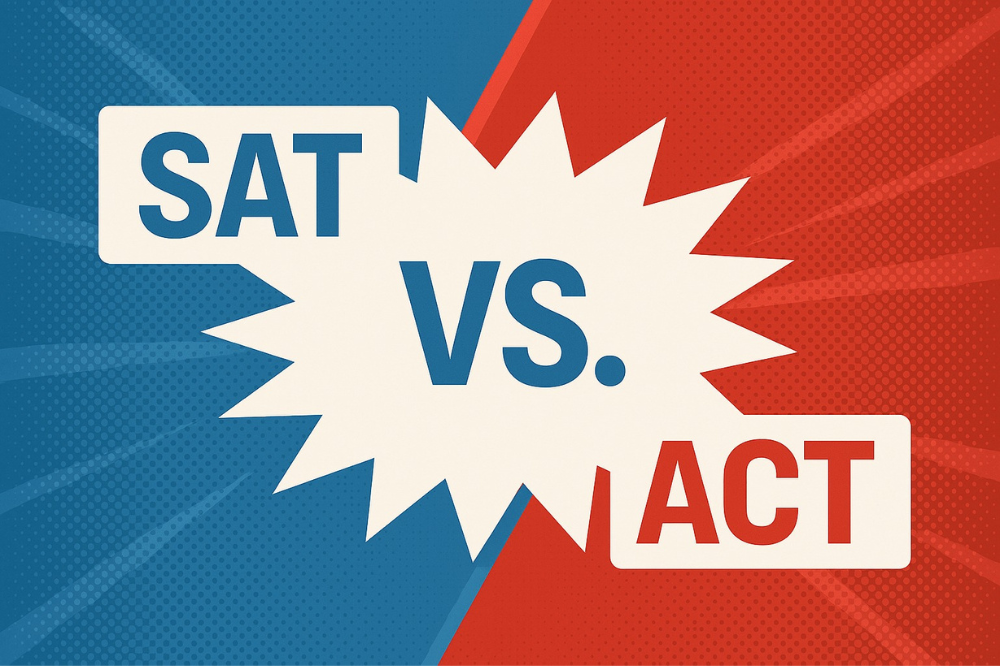Blog > SAT VS ACT: What Are The Major Differences?
SAT VS ACT: What Are The Major Differences?
June 13th, 2025

For a long time, the SAT and ACT have been the two most widely accepted standardised tests for college admissions in the United States. Although both are designed to measure a student's preparedness for college, the two differ widely in terms of format, substance, scoring, and subject matter. Choosing one or the other is often a matter of a student’s strengths and preferences and college goals. Here’s a blog that will give you an in-depth analysis comparison to help you decide.
Structure and Format
There are major differences in the structure and formatting of the SAT and ACT.
The two sections of SAT are Reading & Writing (combined) and Math (calculator and no-calculator). The total number of questions in the test is 98, and it’s duration is approximately 2 hours and 14 minutes. In 2024, the SAT moved entirely to digital testing with adaptive modules that adjusted the difficulty of questions based on student answers. The test features shorter passages, usually 150 words or less, with a single question for each passage. The SAT, unlike the ACT, does not include a standalone science section; rather, reasoning with history and social studies, as well as natural sciences, is incorporated into reading and math questions.
On the contrary, ACT has a total of four primary sections: English, Math, Reading, and Science, plus an optional essay segment. The exam consists of 215 questions and a duration of around 2 hours and 55 minutes, or 3 hours and 35 minutes if the essay is included. In the U.S., the ACT is most commonly offered as a paper-and-pencil test but is also offered in limited contexts in an online format. The reading passages are longer, often 800 words or more, and have multiple questions per passage. The ACT has a separate 40-question science section that emphasises data analysis and experimental design.
Timing and Pacing
The timing and pace of the two tests are also different. On one hand, the SAT provides more time per question—approximately 1 minute and 22 seconds apiece—so it can be a good fit for students who work a little slower or require additional time to process complicated problems. In comparison, the ACT moves at a quicker pace, with approximately 49 seconds per question. This makes the ACT a better fit for students who can work quickly under time constraints.
Scoring Pattern
Both the SAT and ACT have distinct scoring systems. The SAT is scored between 400 and 1600 points. Each section (Reading & Writing and Math) is worth a maximum of 800 points and a minimum of 200 points. "Superscoring," in the SAT, is considered as applying the best scores of a student from different test attempts. This is more helpful for students who perform well in some sections better than other sections on various attempts. The ACT ranges from 1 to 36 points, with the composite score being the average of the four scores: English, Math, Reading, and Science. The essay is scored separately and is not included in the composite score.
Some Other Factors To Consider
A few important things to know before preparing for either of these two exams are personal academic strengths, preferred types of testing, and requirements of their targeted colleges. Students who prefer shorter passages, more time per question, excel in mathematics, or prefer a test without a dedicated science section may lean towards the SAT. Additionally, students who want a variety of free prep materials would also find the SAT interesting. However, in contrast, students who prefer the ACT are comfortable working fast with strict time limits, tend to excel in analysing scientific data, or would like the opportunity to showcase their writing abilities in the optional essay.






Add a Comment